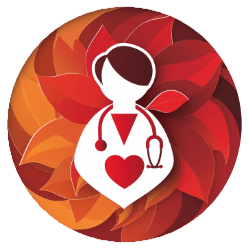In the digital age, you might find it amusing that suggesting a tech-free break in healthcare settings is akin to proposing a return to horse-drawn carriages for hospital transport. Yet, as you pause and reflect, there’s a growing understanding of how constant connectivity impacts our well-being, particularly for those in high-stress environments like healthcare.
You’re aware that the relentless buzz of notifications and the glow of screens can fray the nerves of even the most composed professionals. It’s not just about turning off devices; it’s about re-engaging with the world around you and rediscovering the value of direct human connection and the simple pleasures that exist outside the digital realm.
By considering these ten strategies, you’re taking a step toward fostering a healthier, more balanced work environment where your well-being is as much a priority as the patients you care for.
Let’s explore how integrating these tech-free zones and activities can transform not just your day but potentially the fabric of healthcare culture itself.
Key Takeaways
- Mindful meditation and outdoor activities such as walks can help reduce stress, improve concentration, and promote mental rejuvenation in healthcare settings.
- Engaging in creative hobbies like painting, writing, crafting, or playing a musical instrument can reduce screen time, foster imagination, and enrich personal life in healthcare settings.
- Organizing interdepartmental matches and social gatherings can foster camaraderie, teamwork, and a positive culture across all levels of healthcare staff.
- Implementing reading hours and promoting reflective journaling can reduce screen time, promote relaxation, encourage mental stimulation, and foster a culture of mindfulness and self-care in healthcare settings.
Prioritize Mindful Meditation
Embracing mindful meditation as a daily habit can transform your ability to stay present and grounded, especially in the high-pressure environment of healthcare. By focusing on your breath, bodily sensations, or a specific object, you allow thoughts to come and go without attachment. This practice nurtures a deeper sense of awareness and presence in the moment, crucial for those who dedicate their lives to serving others.
Regular engagement in mindful meditation isn’t just about finding peace in chaos; it’s a proven strategy to reduce stress, improve concentration, and enhance overall mental health. Integrating this practice into your daily routine, even through short breaks to center yourself, can significantly refocus your mind and spirit.
You’re encouraged to explore various techniques, such as loving-kindness meditation, body scan meditation, or mindful walking, to discover what resonates best with you. Each method offers unique benefits, but all share the common goal of fostering a serene, attentive state of being.
Schedule Outdoor Walks
You know how refreshing it feels to step away from your screen and breathe in fresh air.
By scheduling outdoor walks, you’re not just breaking free from digital chains; you’re embracing nature’s therapeutic embrace and fostering meaningful connections away from keyboards.
It’s about planning these moments intentionally, ensuring you reap the benefits of nature’s calm and the joy of unplugged conversations.
Benefits of Nature Walks
Stepping out for regular nature walks can significantly boost your physical and mental well-being, offering a much-needed respite from the digital world. By disconnecting from technology and connecting with nature, you’re not just taking a break; you’re nurturing your health on multiple levels.
| Benefit | Description |
|---|---|
| Stress Reduction | Nature’s tranquility helps lower stress levels. |
| Mood Improvement | The beauty and calm of nature enhance mood. |
| Physical Activity | Walking increases physical health, reducing screen time. |
| Mindfulness | Engages you in the present, promoting mental rejuvenation. |
Planning Walk Breaks
Scheduling regular outdoor walks into your day carves out essential time for physical and mental refreshment, breaking the monotony of screen-bound tasks. In healthcare, where serving others is your calling, taking care of your own physical health through such simple acts can profoundly impact your ability to care for others.
Here’s how you can integrate this practice effectively:
- Set specific times for walks to ensure consistency.
- Incorporate walks around high-stress tasks for a mental and physical reset.
- Use these moments to connect with nature, reducing mental fatigue.
- Transform team meetings into walking sessions for fresh thinking and movement.
Foster Creative Hobbies
Engaging in creative hobbies like painting or writing can spark your imagination and offer a refreshing escape from the digital world. As healthcare professionals dedicated to providing personalized care, it’s essential to remember the value of disconnecting and recharging through activities that allow for self-expression and relaxation. Whether it’s crafting, gardening, or playing a musical instrument, these pursuits not only reduce screen time but also foster a connection with oneself, enhancing your ability to connect with patients on a deeper level.
Embracing hobbies such as cooking, photography, or woodworking encourages mindfulness and focus, qualities that are invaluable in healthcare. These activities promote a sense of accomplishment and creativity without the constant buzz of technology, allowing you to return to your work with a renewed perspective and energy.
Consider pottery, sculpting, drawing, sewing, DIY projects, or journaling as gateways to nurturing your creative self. These hobbies provide a much-needed tech-free sanctuary, fostering an environment where personalized care thrives. By investing time in these activities, you not only enrich your own life but also enhance the quality of care you offer, embodying the principle that to serve others well, we must first take care of ourselves.
Encourage Team Sports
You’ve seen how fostering creative hobbies can transform your break times; now, imagine incorporating team sports into your routine.
By organizing sports events or promoting interdepartmental matches, you’re not just staying active but also building a sense of community and enhancing vital skills like teamwork and leadership.
It’s a refreshing way to disconnect from technology, bond with your colleagues, and maintain both your physical and mental well-being.
Benefits of Team Sports
Participating in team sports not only hones your teamwork and communication skills but also boosts your physical and mental well-being. In the demanding world of health care, finding moments to recharge is crucial. Imagine the collective joy, the shared victories, and even the lessons in loss. These experiences are invaluable, fostering a sense of unity and resilience among participants.
- Enhances Physical Fitness: Regular activity keeps the body strong and healthy, a must for those in health care.
- Builds Social Connections: Forming friendships that provide support in and out of the workplace.
- Boosts Self-Confidence: Achievements in sports translate to a confident approach in professional challenges.
- Creates a Sense of Belonging: Being part of a team offers a comforting sense of community, crucial in the often isolating health care sector.
Organizing Sports Events
To truly enhance team spirit and health, consider regularly organizing team sports events within your healthcare organization.
These events foster a sense of camaraderie and teamwork, crucial in a field dedicated to care.
By stepping away from the daily demands and engaging in physical activity together, employees can communicate and collaborate in a relaxed environment.
This not only encourages a healthy competition but also significantly contributes to everyone’s well-being.
Moreover, participating in team sports boosts morale, strengthens relationships, and cultivates a positive culture where care for each other reflects the care provided to patients.
It’s a reflective cycle of benefits, enhancing the overall atmosphere in your healthcare setting.
Promoting Interdepartmental Matches
By organizing interdepartmental matches in sports like soccer, basketball, or volleyball, we’re fostering a unique camaraderie and teamwork across all levels of our healthcare staff. It’s more than just a game; it’s a strategic move to enhance our health resources through unity and mutual support.
Consider the profound impact:
- Boosted Morale: Witnessing the joy and enthusiasm, uplifting everyone’s spirit.
- Improved Communication: Breaking down barriers that often exist between departments.
- Unity: Sharing victories and learning from losses together.
- Stress Relief: Providing a much-needed escape, rejuvenating our commitment to serve.
In essence, through these matches, we’re not just playing for fun. We’re weaving a stronger fabric of support, understanding, and collaboration, essential in delivering compassionate care.
Implement Reading Hours
In healthcare settings, integrating reading hours offers you a serene escape from the digital world, allowing a moment of tranquility amidst the hustle. By scheduling these hours, you encourage not just a break from the screen but also a journey into stories, facts, and worlds beyond the immediate concerns of digital health and medical routines. It’s a time when patients and staff alike can rediscover the joy of reading, an activity that simultaneously rests the eyes from screens and stimulates the mind.
| Benefits of Reading Hours | How to Implement |
|---|---|
| Reduces screen time | Schedule regular intervals |
| Promotes relaxation | Designate quiet reading spaces |
| Encourages mental stimulation | Provide a variety of reading materials |
| Creates a calm environment | Announce upcoming reading hours |
| Helps disconnect from digital devices | Encourage participation |
Embracing reading hours in your healthcare environment isn’t just about taking a break; it’s about nurturing a culture where mental well-being is as valued as physical health. It’s a gentle reminder that in our fast-paced, digitally driven world, there’s profound beauty and simplicity in turning a page and losing oneself in reading. This practice reaffirms the importance of caring for the mind as much as the body, fostering a holistic approach to well-being that benefits both patients and healthcare providers.
Promote Reflective Journaling
While embracing reading hours offers a serene escape, promoting reflective journaling invites you to explore your inner landscape, documenting thoughts and emotions that surface in the quiet moments. This practice isn’t just about penning down daily events; it’s a profound journey towards self-awareness and personal health. By reflecting on your experiences, you can uncover patterns, celebrate growth, and navigate challenges with greater resilience.
To truly embrace this practice in healthcare settings, consider these steps:
- Create Structured Prompts: Offer specific questions that guide individuals deeper into their thoughts and feelings, facilitating a more meaningful exploration of their inner selves.
- Offer Time and Space: Dedicate periods for journaling, allowing for a pause in the day to reflect, process, and gain clarity away from the hustle.
- Integrate Journaling into Therapy: Use journaling as a tool within therapeutic contexts to help individuals articulate their emotional journey and track progress over time.
- Provide Journaling Resources: Make available writing prompts, tips, and resources to support individuals in establishing a reflective practice, nurturing their personal health journey.
Incorporating these elements not only supports personal health but also fosters a culture of mindfulness and self-care within healthcare environments.
Organize Social Gatherings
Organizing social gatherings, including team outings and events, can significantly enhance bonding and foster a sense of community among healthcare professionals. You’re constantly surrounded by technology, with screens and devices integral to your work. Yet, stepping away from these digital tools is vital. By planning regular team outings or events, you create opportunities for genuine connection, crucial in a field driven by compassion and teamwork.
Here’s a simple guide to get started:
| Action Item | Benefit | Tip |
|---|---|---|
| Rotate Hosting Duties | Distributes responsibility | Ensures everyone feels included |
| Create Theme Nights | Adds excitement | Encourage creativity and participation |
| Incorporate Team-building | Strengthens relationships | Choose activities that foster collaboration |
| Solicit Input | Promotes inclusivity | Make decisions that reflect the team’s preferences |
Reflect on the impact of these gatherings. They’re not just breaks from the digital world but a reinforcement of the human connections that underpin your profession. At the heart of healthcare is a commitment to serve others, and these tech-free moments strengthen that foundation. Remember, while technology is indispensable for modern medicine, the bonds formed between colleagues aged 18 or 80, are equally crucial. These gatherings remind you why you chose this path: to care, together, beyond the confines of technology.
Offer Yoga Sessions
Building on the theme of fostering connections away from the digital sphere, offering yoga sessions presents another avenue to enhance well-being among healthcare professionals. As you dedicate your lives to serving others, it’s vital to remember the importance of nurturing your own mental and physical health. Yoga, with its unique blend of physical postures, deep breathing, and meditation, provides a perfect respite from the relentless use of technology that characterizes much of your workday.
Consider these benefits:
- Stress Reduction: Yoga’s meditative practices can help lower stress levels, offering you a much-needed pause in your high-pressure environment.
- Physical Health: The physical movements improve flexibility, strength, and posture, countering the strains of long hours spent caring for others.
- Mental Clarity: Engaging in yoga can clear the mind, allowing for better focus and decision-making when you return to your duties.
- Accessibility and Inclusion: Yoga can be adapted for all skill levels, ensuring everyone can participate, regardless of their physical condition.
Establish Nap Zones
Imagine how rejuvenated you’d feel after a short nap during a hectic day at work.
Setting up Nap Zones in healthcare facilities can provide staff with a peaceful retreat to rest and recharge, enhancing their overall well-being and job performance.
Benefits of Napping
Integrating nap zones within healthcare facilities can significantly enhance staff well-being, offering a dedicated space for rest and rejuvenation amidst their demanding schedules. Taking a step back from the whirlwind of duties and digital tools, you’re provided with a sanctuary to:
- Improve alertness: sharpening your focus for the precise work that lies ahead.
- Elevate your mood: bringing more positivity to your interactions with patients and colleagues.
- Boost cognitive function: ensuring you’re always at the top of your game, making critical decisions.
- Reduce stress and bolster immune function: keeping you healthy and ready to serve those in need.
Setting Up Zones
To ensure healthcare staff have a sanctuary for rest amidst their hectic schedules, setting up designated nap zones within facilities is a crucial step forward. By creating these quiet, comfortable spaces, you’re acknowledging the hard work and emotional toll taken on those dedicated to serving others.
Outfit these zones with cozy seating, dim lighting, and noise-canceling features to block out the bustling hospital environment. It’s also key to keep these areas free from digital devices, encouraging a true break from the constant alerts and demands of technology.
Implementing a clear sign-up system ensures everyone has a fair shot at recharging. Encourage your team to embrace these tech-free havens during breaks, fostering a culture of well-being and sustained energy for the demanding work ahead.
Facilitate Breathing Exercises
Facilitating breathing exercises offers a powerful way for you to alleviate stress and enhance your mental well-being within the healthcare setting. As a caregiver, embracing this powerful tool can make a significant difference in the lives of those you serve. It’s about more than just guiding patients through the motions; it’s about imparting a skill that can profoundly transform their experience of care and recovery.
Consider these four impactful reasons to incorporate breathing exercises into your daily routine:
- Promotes Calmness: Deep breathing techniques foster a sense of calm, making them a cornerstone in managing anxiety and fostering a peaceful environment.
- Enhances Mindfulness: Encouraging mindfulness through focused breathing helps patients become more present, aiding in their overall mental well-being.
- Aids in Pain Management: Teaching patients to use breathing as a coping mechanism can significantly alleviate discomfort and pain.
- Holistic Care Approach: Integrating breathing exercises into patient care embodies a holistic approach, addressing not just the physical but also the emotional and psychological needs.
Frequently Asked Questions
How Can Technology Be Implemented in a Healthcare Setting?
To weave technology into healthcare’s fabric, you’ll employ VR therapy, AI-powered apps, and wearable devices, like stitching warmth into a quilt. This approach enhances mental health care, offering tailored support and fostering a caring community.
How Can Tech Improve a Lack of Time or Interest in Corporate Wellness Programs?
Tech can make corporate wellness programs more engaging by personalizing experiences and setting manageable goals. It’s about finding what motivates you and using tech as a tool to foster interest and manage your time better.
How Can Taking a Technology Break Help Your Health?
Taking a tech break can significantly boost your health by reducing stress, improving sleep, and enhancing mental well-being. It’s a powerful way to reconnect with yourself and others, offering a much-needed pause in a digital world.
How Do You Take a Break From Technology?
To unplug from the digital world, start by turning off unnecessary notifications. Schedule specific times for online activity and consider a digital detox or device-free day weekly, focusing on limiting certain apps or websites.





